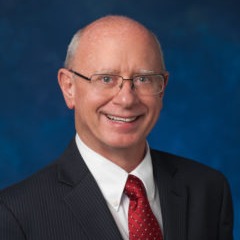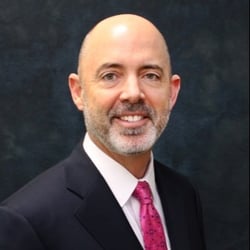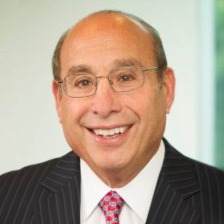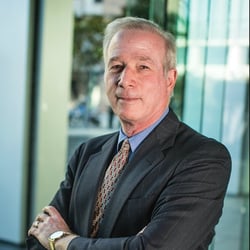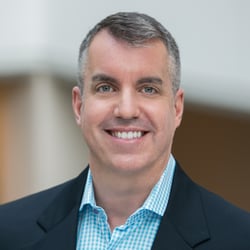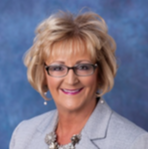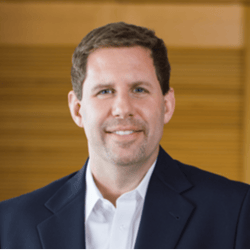 Joshua J. Ofman, MD, MSHS, is the Senior Vice President, Global Value, Access and Policy at Amgen ensuring the integration of reimbursement needs into the product development and commercialization process. In prior roles, Dr. Ofman was an academic gastroenterologist at Cedars-Sinai Health System and Senior Vice President of Zynx Health Inc., focused on evidence-based clinical information for quality improvement and reimbursement, and health economics strategy for life sciences companies. Dr. Ofman received his advanced medical training in Gastroenterology from UCLA and his Health Services Research training from the RAND/UCLA/VA program.
Joshua J. Ofman, MD, MSHS, is the Senior Vice President, Global Value, Access and Policy at Amgen ensuring the integration of reimbursement needs into the product development and commercialization process. In prior roles, Dr. Ofman was an academic gastroenterologist at Cedars-Sinai Health System and Senior Vice President of Zynx Health Inc., focused on evidence-based clinical information for quality improvement and reimbursement, and health economics strategy for life sciences companies. Dr. Ofman received his advanced medical training in Gastroenterology from UCLA and his Health Services Research training from the RAND/UCLA/VA program.
Key Takeaways
- The biopharmaceutical industry has a vested interest in fruitful patient centric collaborations to drive our attention towards the most pressing health issues for which we can make a positive impact.
- Developing substantive 1:1 relationships with key stakeholders is crucial to open up the conversation to high value collaborations.
- The leadership of all stakeholder organizations needs to demonstrate their commitment to collaboration, or else it will be seen as just a business tactic and progress will be stalled.
Can you tell us about your role as SVP, Global Value, Access and Policy at Amgen?
I oversee the work we do on the pipeline to ensure we are embedding payer-thinking into the way that we develop and commercialize our products on a global scale. I oversee our government affairs activities outside of the U.S., our health policy activities, our global advocacy activities, and our value-based partnerships with payers and governments around the world. Finally, I oversee the global pricing activities, including the launch price policies for our new products. I also play a role on Amgen’s Portfolio Governance Committee, Global Commercial Committee and Deal Review Committee where, with my colleagues, we review the commercial forecast and strategic plans, business development assumptions and plans, and the portfolio strategy which ultimately reports up to our CEO.
Can you elaborate what is meant by “embedding payer-thinking” into your process?
As an example, let’s say we’ve just established the proof of concept of a potential drug for rheumatoid arthritis. There are a lot of ways you could develop that molecule. Our team has a keen understanding of the value drivers at play for patients, payers, and society more broadly. We take this a layer deeper to understand how payers think about the disease, the competitors, how the formularies work, what the prices are in the market and what the access restrictions are around the world. With this information in mind, we can develop a research program that addresses the biggest issues around this new drug. For example, if we need to demonstrate that the drug is going to work in a particular sub-population of patients, we may do a different subset of trials to test the drug, or if we need to demonstrate breakthrough or best-in-class effectiveness, then we may need to take the risk of a comparative trial with one or more agents and actually measure resource utilization on the trials. We may find that a key value driver is quality of life and productivity, and thus need to develop novel instruments to measure that in the studies. For novel agents, we may need to design trials with endpoints that matter most to patients, and that will demonstrate the value proposition to support our pricing. Lastly, we need to continue to explore how best to “embed payer-thinking” when developing our products to help inform our clinical development programs, the comparators, the endpoints assessed, and even the way the study is powered and the data are analyzed, keeping both regulatory and payer requirements top of mind.
What is Amgen’s role in the broader health ecosystem?
What I believe is unique about Amgen’s process is that we think very broadly and holistically about our role in the health ecosystem. It certainly hasn’t always been this way, but the shift that we’ve made in thinking throughout the last five years has been quite a departure from how things used to be done. Traditionally, biopharmaceutical companies have been a supplier into the health ecosystem. We are becoming an integral part of the broader health ecosystem comprised of providers (the delivery system), payers (the payment system), and intermediaries (the wholesalers, the distributors, the PBMs). Amgen is making efforts to think much more holistically about how we can partner collaboratively with all of these players in the healthcare ecosystem to drive better outcomes, improve population health, and deliver more value to the system.
How do you encourage a collaborative mindset internally within Amgen?
Over the last five years, our payer teams have led the company into the realm of value-based partnerships and innovative payment models. As part of a broader corporate transformation, we have really instituted a “Call to Action” to create some urgency in the company around how we have to step up to become a more integrative, collaborative partner in the healthcare system. I’ve presented at leadership meetings across the company and to the CEO staff to try to stimulate the company to recognize the importance of becoming a more integrated partner and collaborator in our complex healthcare ecosystem. Usually, my pitch includes the following:
“The healthcare system is under a period of dynamic change where issues of affordability, cost, and value are rising to the forefront. The system is burdened by a tremendous financial strain. The main culprit is the rising cost of disease and the aging population. The solution to that problem, in many respects, are innovative biopharmaceuticals. But too often we’re seen as the problem, and so we have to change the conversation within the ecosystem to recognize that innovative biopharmaceuticals are part of that solution, and in order to get that done we have to become an integrated, collaborative partner in this health ecosystem so that we’re not seen simply as a supplier.”
How has Amgen begun to make the shift from being viewed as a supplier to a collaborator?
Through its Patient-first model, Amgen is committed to being a productive partner in collaboration with all stakeholders to manage rising healthcare costs and reduce human and financial burden of serious disease. The first step is to build substantive and trusted relationships. We engage with some of the key thought leaders, think tanks, policy makers, and large employer coalitions in the country and ex-U.S. as well. We’re involved with the Duke Margolis Center, the Schaeffer Center for Health Policy and Economics, the International Consortium for Health Outcomes Measurement and the critical government agencies like CMS, and PCORI among others. The next step is to begin to develop partnerships with all the various stakeholders, which we’ve begun to do already with various payer and employer groups in the U.S. and institutions and governments ex-U.S. Ultimately, we’d like to bring together multiple parties at the same time to drive some collaborative partnerships. That’s really the next step in the evolution of where we’re headed. Until then, we are learning about each of the stakeholders in 1:1 relationships, and how we may work together most effectively to improve patient care.
The best hope for patients in the fight against serious disease are innovative medicines. Ensuring appropriate access to these medicines increasingly requires a comprehensive set of solutions and, among these solutions, value-based partnerships are showing great promise. The legislative and regulatory environment is complex, and Amgen is steadily increasing our expertise, bandwidth, and capabilities in this space. As we look ahead though, refinements to both legislation and policies could help increase and facilitate both the number and types of these partnerships and help support stakeholders realize the potential that value-based partnerships can bring to the healthcare system.
Could you provide an example of a value-based partnership between Amgen and another health ecosystem player?
We recently sent out a press release about a 3-year collaborative partnership with Humana, one of the largest payers in the country. Humana was a very logical partner because we have a shared interest in population health, they have always been a leader in public health, and have an organization within Humana that is focused on how to measure and collect data in their population. All those things together made them a terrific choice for a potential partnership. We reached out to their senior leadership team to discuss opportunities to work together. As you may know, there’s a lot of skepticism from payers about our industry’s motives. We had to work to gain their trust, so that they could recognize our sincere intention of identifying mutual areas of interest. The first thing we did was pull together a small group of executives to open up the conversation and get to know one another. We had to be sure to have the right people around the table and be very transparent to demonstrate our mindset of collaboration. Once we broke through that initial barrier of getting to know each other’s points of view and aligning on mutual goals, we held a series of subsequent meetings to begin generating creative ideas and fleshing them out. We are now working with them on 7 different projects to improve the quality and efficient of care of the populations we serve.
Could you share some of the collaborative solutions you’re working on?
With Humana, we are still in the early stages of identifying opportunities. However, I can share some interesting things we’ve been doing with United Healthcare, another major payer in the health industry. With United Healthcare, we have a great partnership around patients who have been hospitalized with fractures. Over 50% of U.S. patients who have had a hip fracture never get tested, diagnosed, or treated for osteoporosis. Osteoporosis is so common, and when patients fracture and are hospitalized, they often end up in nursing homes and their quality of life suffers. We worked with United to put together an educational intervention program directed towards patients and physicians to improve diagnosis and treatment rates.
How did you identify United as a potential collaborative partner, and who were the key stakeholders involved?
For the past 5 years, Amgen has developed deep, collaborative partnerships with some of the payers. Our partnership with United grew out of our long-standing relationship with Optum Insights, the health information technology and services firm that is part of UnitedHealth Group. Routinely we meet with their medical leadership team to talk about their interests and the work going on within their health plan and their health system clients. In one of those meetings several years ago, we discovered that osteoporosis was one of their focus areas, which is one that we share as well. Once we identified that as a mutual area of interest, we brainstormed a couple of ideas for how we could improve care in that area, and that’s what resulted in the collaboration.
What are some obstacles that may hinder developing collaborative solutions with other sectors?
It’s critical for the success of these partnerships to keep the focus of the conversation on the common ground of population health. By doing so, the parties interests remain aligned on a shared goal as opposed to enhancing one organization or the other. For Amgen, we engage in partnerships where we feel we can make a difference on population health as opposed to a focusing only on Amgen products. With United, our collective interests were well-aligned on the patient. When we run into situations where the financial interests are the primary focus or significantly divergent, we choose not to pursue. That rarely happens, though – we are almost always able to find common ground with our potential partners and are able to work together.
What would you say are “lessons learned” from your experiences developing collaborative partnerships?
The leadership of both organizations needs to be involved. If it’s seen as just a business tactic, these collaborations tend to stall or fall apart. If the right leadership is involved, and there’s the right level of organizational commitment, then I think you can make some great progress. The other thing is that the gravity of organizations to continue to maintain the “status quo” is very strong, and it takes a lot of resilience to move the organization away from that mentality. One of my mentors when I first came to Amgen, Craig Brooks, used to coach me about being too impatient and that the change I was trying to effect would take much longer than I thought. He was right. What I thought we could change in two years took four, and what I thought would take four took seven. It can certainly happen, but you really need resilience, passion, patience, and commitment to the vision in order to impact real and sustainable change.
View our other HELM Q&A Interviews:

 Joshua J. Ofman, MD, MSHS, is the Senior Vice President, Global Value, Access and Policy at Amgen ensuring the integration of reimbursement needs into the product development and commercialization process. In prior roles, Dr. Ofman was an academic gastroenterologist at Cedars-Sinai Health System and Senior Vice President of Zynx Health Inc., focused on evidence-based clinical information for quality improvement and reimbursement, and health economics strategy for life sciences companies. Dr. Ofman received his advanced medical training in Gastroenterology from UCLA and his Health Services Research training from the RAND/UCLA/VA program.
Joshua J. Ofman, MD, MSHS, is the Senior Vice President, Global Value, Access and Policy at Amgen ensuring the integration of reimbursement needs into the product development and commercialization process. In prior roles, Dr. Ofman was an academic gastroenterologist at Cedars-Sinai Health System and Senior Vice President of Zynx Health Inc., focused on evidence-based clinical information for quality improvement and reimbursement, and health economics strategy for life sciences companies. Dr. Ofman received his advanced medical training in Gastroenterology from UCLA and his Health Services Research training from the RAND/UCLA/VA program.

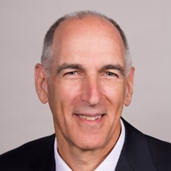

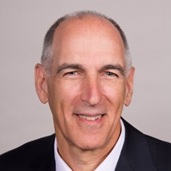 Andrew Baskin, MD, is Aetna’s Vice President, National MedicalDirector for Quality and Clinical Policy and served as the Interim Chief Medical Officer (in 2014). He works on initiatives to measure and improve quality of care, the provision of evidence based care, quality measurement implementation and public reporting, health plan accreditation, and the establishment of performance based networks. Additionally, Andy partners with others to help establish programs which create incentives for more effective and efficient care, influence and assure compliance with healthcare reform regulations, develop products to improve affordability and quality of care, and promote payment reform.
Andrew Baskin, MD, is Aetna’s Vice President, National MedicalDirector for Quality and Clinical Policy and served as the Interim Chief Medical Officer (in 2014). He works on initiatives to measure and improve quality of care, the provision of evidence based care, quality measurement implementation and public reporting, health plan accreditation, and the establishment of performance based networks. Additionally, Andy partners with others to help establish programs which create incentives for more effective and efficient care, influence and assure compliance with healthcare reform regulations, develop products to improve affordability and quality of care, and promote payment reform. Mohamed Diab, MD, Vice President of Provider Transformation leads population health management at Aetna. His focus is on providers as they transform their care delivery to achieve the “Triple Aim” by improving quality of care and reducing unnecessary cost. Mohamed has more than 25 years of experience as a provider as well as an executive in the payer and consulting industries. He has a background in medical management, pharmacy benefit management, clinical informatics and cost management programs.
Mohamed Diab, MD, Vice President of Provider Transformation leads population health management at Aetna. His focus is on providers as they transform their care delivery to achieve the “Triple Aim” by improving quality of care and reducing unnecessary cost. Mohamed has more than 25 years of experience as a provider as well as an executive in the payer and consulting industries. He has a background in medical management, pharmacy benefit management, clinical informatics and cost management programs.



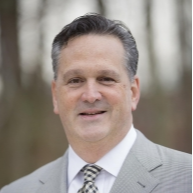



 Robert C. Garrett is Co-CEO of Hackensack Meridian Health, which has four hospitals ranked among the top 10 in New Jersey according to U.S. News & World Report – including No. 1 ranked Hackensack University Medical Center - more than any other network in the state. Robert focused on aggressive expansion of the Hackensack University Network before its merger with Meridian Health. As Co-CEO, Robert concentrates on innovation and leading partnerships, including launching New Jersey’s first private medical school with Seton Hall University and a historic partnership with Memorial Sloan Kettering Cancer Center.
Robert C. Garrett is Co-CEO of Hackensack Meridian Health, which has four hospitals ranked among the top 10 in New Jersey according to U.S. News & World Report – including No. 1 ranked Hackensack University Medical Center - more than any other network in the state. Robert focused on aggressive expansion of the Hackensack University Network before its merger with Meridian Health. As Co-CEO, Robert concentrates on innovation and leading partnerships, including launching New Jersey’s first private medical school with Seton Hall University and a historic partnership with Memorial Sloan Kettering Cancer Center. John K. Lloyd is Co-CEO of Hackensack Meridian Health, one of the largest, most comprehensive health networks in New Jersey, which includes 13 hospitals, 28,000 team members, more than 6,000 physicians and over 140 patient care locations across the state. John has focused much of his career on developing a full continuum of care – long before national health care reform mandated such changes. As Co-CEO, John oversees all non-acute care hospital businesses, including population health and the foundations. John’s expertise and vision have helped the network meet and exceed the challenges of health care reform.
John K. Lloyd is Co-CEO of Hackensack Meridian Health, one of the largest, most comprehensive health networks in New Jersey, which includes 13 hospitals, 28,000 team members, more than 6,000 physicians and over 140 patient care locations across the state. John has focused much of his career on developing a full continuum of care – long before national health care reform mandated such changes. As Co-CEO, John oversees all non-acute care hospital businesses, including population health and the foundations. John’s expertise and vision have helped the network meet and exceed the challenges of health care reform. Patrick R. Young is president of Population Health for Hackensack Meridian Health, where he leads the Population Health division and is responsible for accelerating the development of strategic priorities related to health care reform; population health management; Meridian’s Medicare Shared Savings Accountable Care Organization; Hackensack Meridian Health Partners, Hackensack Meridian Health’s clinically integrated network; health insurance partnerships; as well as overseeing Managed Care.
Patrick R. Young is president of Population Health for Hackensack Meridian Health, where he leads the Population Health division and is responsible for accelerating the development of strategic priorities related to health care reform; population health management; Meridian’s Medicare Shared Savings Accountable Care Organization; Hackensack Meridian Health Partners, Hackensack Meridian Health’s clinically integrated network; health insurance partnerships; as well as overseeing Managed Care.


